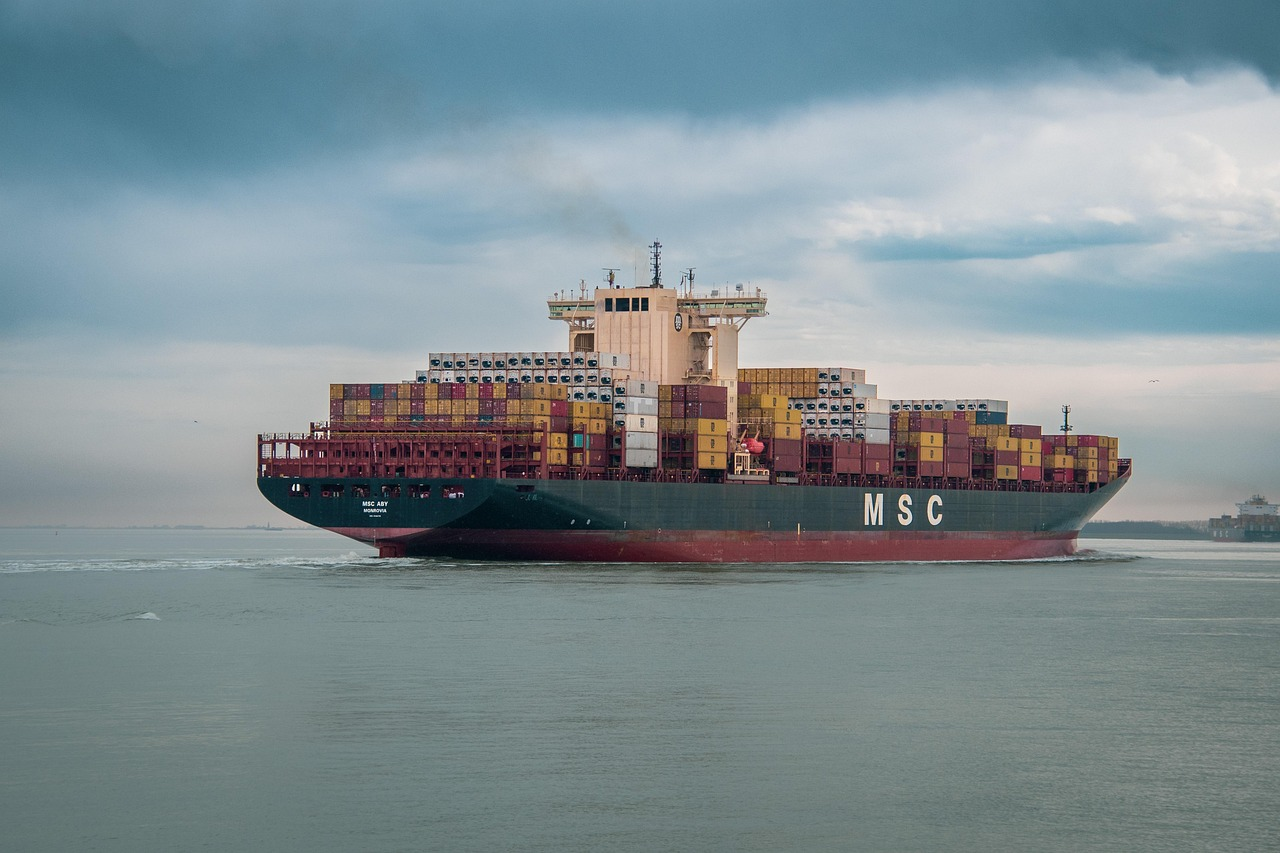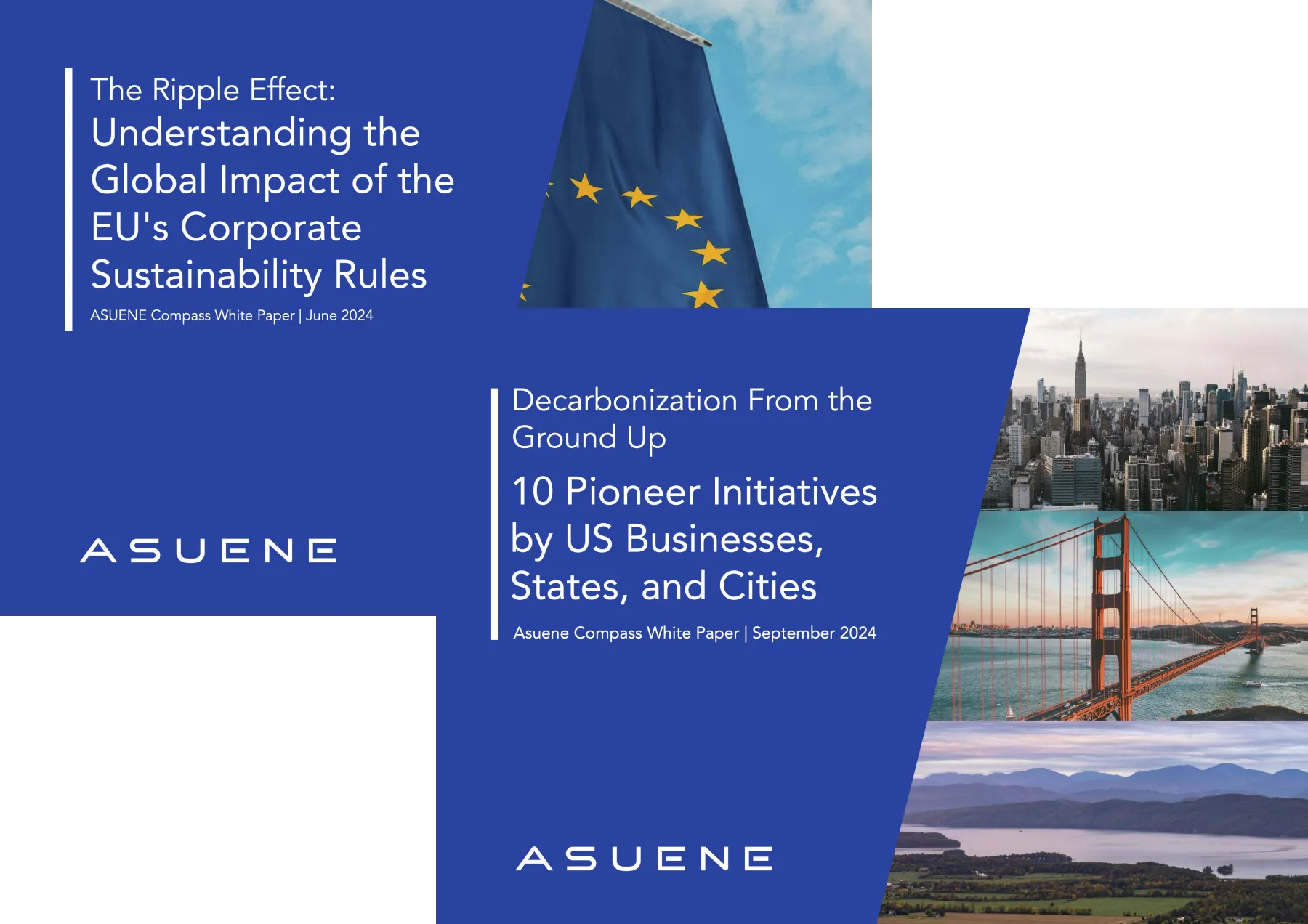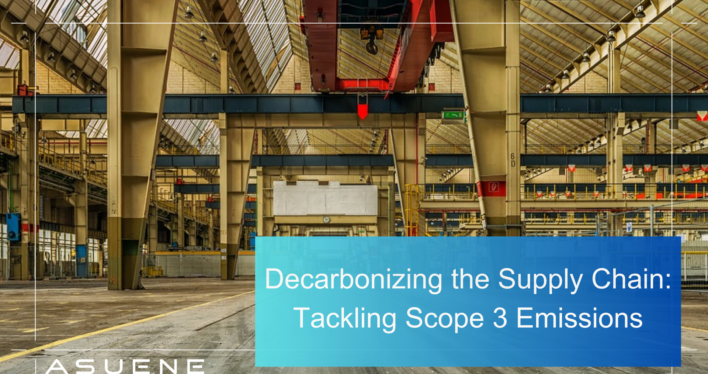- Article Summary
-
Transportation and logistics operations are under increasing pressure to decarbonize, driven by regulatory changes, investor expectations, and rising operational costs tied to emissions. Yet logistics remains one of the most challenging areas of Scope 3 management due to data gaps and fragmented value chains. This article explores the latest global decarbonization trends, methods for accurately measuring logistics-related CO₂ emissions, and practical strategies with case studies on how leading companies are cutting emissions in freight, warehousing, and last-mile delivery. Finally, we introduce how platforms like Asuene support accurate emissions tracking and scenario planning to drive credible and impactful carbon reduction in logistics.
Decarbonization Trends in Logistics: Global Momentum and Policy Signals
Regulatory Pressure Accelerates
Governments and supranational bodies are introducing policies that force the logistics sector to decarbonize. Examples include:
- EU Emissions Trading System (ETS) extended to maritime and aviation logistics
- California’s Advanced Clean Fleets Rule mandating zero-emission truck fleets
- China’s Green Freight Pilot Program focused on modal shifts and fleet upgrades
At the same time, carbon border taxes (e.g. CBAM) and mandatory Scope 3 disclosures (e.g. CSRD in the EU, SEC in the U.S.) increase the urgency for carbon transparency across the supply chain.
Investor and Market Expectations
Logistics-related emissions are increasingly scrutinized in ESG ratings, sustainability-linked loans, and procurement tenders. Companies failing to manage emissions face:
- Loss of contracts due to poor ESG performance
- Higher insurance and capital costs
- Reputational risks in consumer markets
Sustainability is now a key value proposition for 3PLs and freight forwarders.
Corporate Net-Zero Commitments
More than 5,000 companies globally have adopted Science-Based Targets. For most, logistics decarbonization is a top priority for achieving Scope 3 targets, especially in:
- Heavy industries (steel, cement, chemicals)
- Consumer goods and e-commerce
- Retail and automotive
Measuring CO₂ Emissions in Logistics: The Need for Accuracy and Granularity
Accurate emissions data is essential to making logistics decarbonization actionable. However, logistics emissions are complex due to:
- Multiple carriers and logistics providers
- Mixed modes of transport (air, sea, road, rail)
- Lack of real-time emissions data from subcontracted freight

Emissions Calculation Methodologies
| Method | Description | Accuracy |
|---|---|---|
| Spend-based | Estimate CO₂ based on spend (e.g., $ per ton CO₂) | Low |
| Distance-based | Use ton-kilometers multiplied by emission factors | Medium |
| Fuel-based | Use actual fuel consumption by carrier or fleet | High |
Best practice: Use hybrid approach, prioritizing fuel- and distance-based data where available, supplemented by spend-based for missing data.
GHG Protocol and EN 16258 Standards
Global frameworks for logistics CO₂ tracking include:
- GHG Protocol Scope 3 (Category 4 & 9)
- EN 16258 (European standard for transport emissions calculation)
- Smart Freight Centre’s GLEC Framework – globally recognized, carrier-aligned standard
These enable comparability and auditability across transport modes and regions.
Tools for Data Collection
Companies are leveraging digital tools and platforms to collect granular data:
- Carrier-provided fuel data and emissions reports
- IoT and telematics systems (for fleet emissions monitoring)
- Digital carbon accounting platforms (e.g., Asuene) to standardize, consolidate, and visualize transport emissions data
CO₂ Reduction Strategies: From Modal Shifts to Digital Optimization
Once emissions are accurately measured, companies can apply reduction strategies across the logistics chain:
Modal Shift: Moving Freight to Lower-Carbon Options
- Air → Sea or Rail
- Road → Rail or Electric Trucking
Example: A German automotive firm shifted 40% of its regional parts shipments from trucks to rail, reducing emissions by 35% on those routes.
Route and Load Optimization
- AI-driven route planning to minimize distance and avoid congestion
- Load consolidation to increase utilization rates
- Dynamic warehouse-to-customer fulfillment (reduces last-mile travel)
Example: A Japanese e-commerce company reduced last-mile emissions per package by 22% through improved route clustering and consolidation.
Electrification and Alternative Fuels
- Battery electric and hydrogen trucks for short to medium haul
- Biofuels or LNG for long-haul fleets
- Partnerships with green logistics providers
Example: A U.S. retailer replaced 30% of its urban delivery fleet with electric trucks, reducing GHG emissions by ~50 tons CO₂/year per city.
Green Warehousing and Inventory Strategies
- Solar-powered logistics centers
- Energy-efficient cooling systems
- Network redesign to reduce warehouse-to-store distances
Case Study: End-to-End Logistics Decarbonization
Company: Global consumer goods manufacturer
Scope: 45 countries, 200 logistics partners
Actions:
- Centralized logistics CO₂ data via digital platform
- Rebid contracts to favor carriers with green fleets
- Introduced modal shift guidelines for high-volume routes
- Set internal carbon price on air freight
Results (3 years):
- Logistics CO₂ reduced by 28%
- 60% of transport spend aligned with preferred low-emission carriers
- Emissions data included in quarterly executive reports

Conclusion: Logistics as a Lever for Net-Zero Transformation
Decarbonizing transportation and logistics is no longer optional — it is a strategic necessity. With mounting external pressure and fast-evolving technologies, companies that act decisively will realize:
- Operational cost savings through fuel efficiency
- Enhanced supplier resilience
- Stronger ESG credentials and investor confidence
But effective action depends on accurate measurement, integrated systems, and informed decision-making.
Asuene: Powering Accurate CO₂ Tracking and Strategic Reduction in Logistics
Asuene offers a robust, cloud-based platform designed to help companies decarbonize logistics with confidence.
Key Capabilities:
- End-to-end logistics emissions tracking, aligned with GHG Protocol and GLEC
- Multi-mode data integration (air, sea, road, rail) from carriers and internal systems
- Smart dashboards that visualize emissions by route, supplier, or transport type
- Scenario modeling tools to evaluate impact of modal shifts, fuel changes, or carrier selection
- Audit-ready reports for CSRD, CDP, SBTi, and other frameworks
Whether your goal is to improve transparency or to execute a company-wide logistics transformation, Asuene provides the precision, scale, and speed to make it happen.
Download Our Expert Publications!

Why Work with ASUENE Inc.?

ASUENE USA Inc., a subsidiary of Asuene Inc., is a key player in carbon accounting, offering a comprehensive platform that measures, reduces, and reports emissions, including Scope 1-3, with expertise in decarbonization. Asuene serves over 10,000 clients worldwide, providing an all-in-one solution that integrates GHG accounting, ESG supply chain management, a Carbon Credit exchange platform, and third-party verification.
ASUENE supports companies in achieving net-zero goals through advanced technology, consulting services, and an extensive network.
